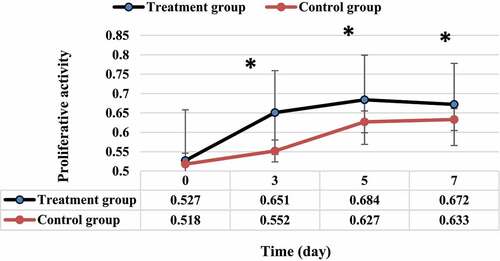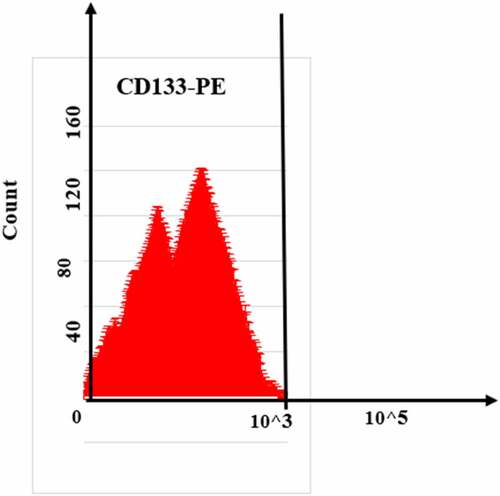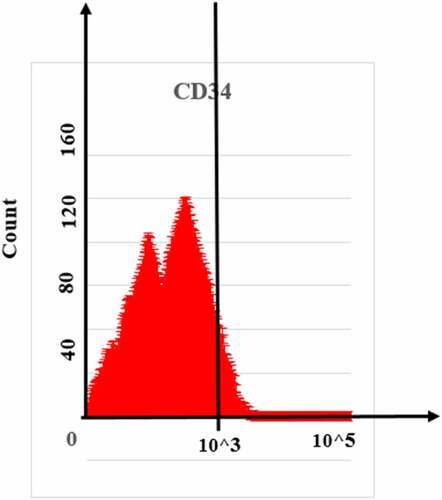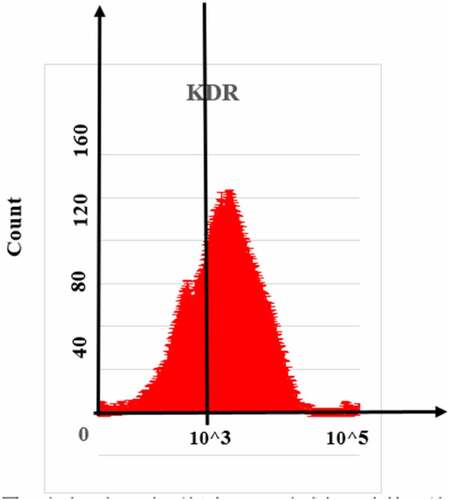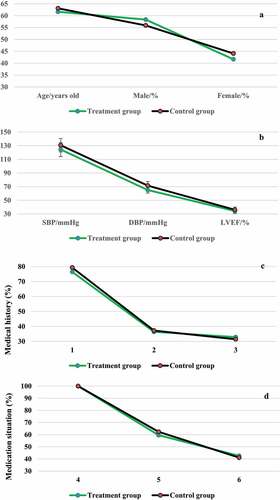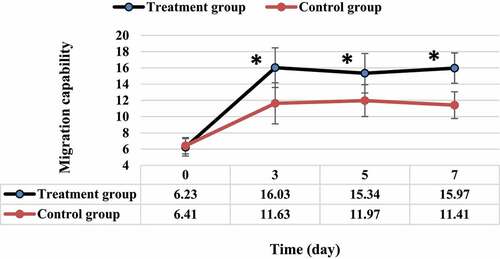Figures & data
Figure 1. Display of the layering results of the cytocentrifuge tube. (a) the cell layering before centrifugation; (b) the cell layering after centrifugation).
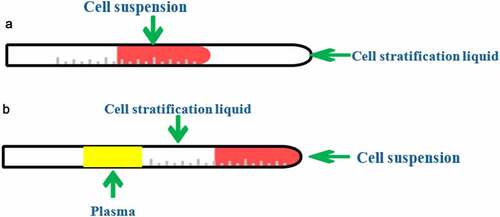
Figure 2. Observation of cell morphology under microscope. (a) preliminarily isolated mononuclear cell; (b) EPCs cell after three days of culture; (c) EPCs cells cultured for five days; (d) EPCs cells cultured for eight days (100×); (e) EPCs cells cultured for eight days (200×).
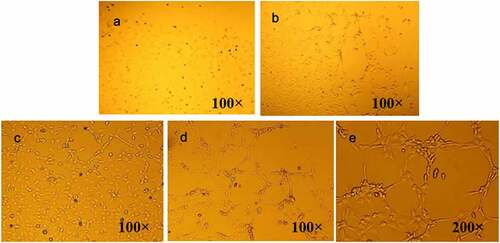
Figure 3. Cell fluorescence double staining observation. (A: Dil-acLDL staining; B: FITC-UEA-I staining; C: double staining).
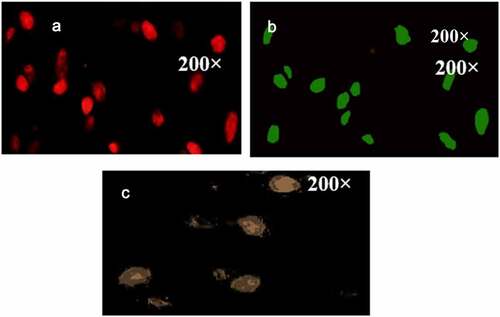
Figure 8. Partial echocardiographic analysis of patients. (A was a sample of a 25-year-old male patient; B was a sample of a 40-year-old female patient).

Figure 9. Comparison of cell proliferation activity between the two groups of EPCs.
